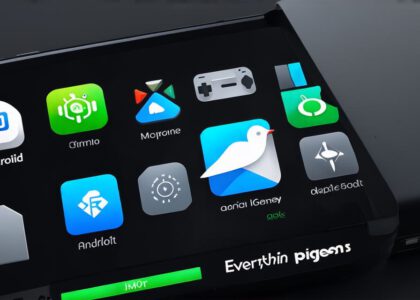The Data Sanctum: Shared Preferences and Internal Storage
Android games primarily rely on two methods for data storage – SharedPreferences and Internal Storage. *SharedPreferences* is a simple data storage mechanism that stores private primitive data in key-value pairs. It’s ideal for small amounts of data like player preferences or high scores. On the other hand, *Internal Storage* can store larger files such as game levels, maps, or user-generated content.

The Persistent Powerhouse: SQLite Databases
For more complex data structures and larger datasets, Android developers often turn to SQLite databases. This powerful tool allows for the creation of structured tables, making it easier to manage and query data efficiently. However, it’s essential to remember that SQLite databases are not automatically backed up by Google Play Services, so they may be lost if a user uninstalls or resets their device.
The Cloud Connection: Google Play Games Services
To ensure data persistence across devices and provide players with the freedom to switch devices without losing progress, many Android games leverage Google Play Games Services (GPGS). GPGS offers cloud saving, allowing game data to be stored on Google’s servers and synced across devices. This feature is particularly useful for multiplayer games where player progress needs to be consistent across sessions.
The Offline Advantage: Local Backup Solutions
For games that require offline play or wish to provide an additional layer of data security, local backup solutions can be implemented. These solutions involve saving game data on the device and then syncing it with the cloud when an internet connection is available. This approach ensures data persistence even in offline scenarios while still offering the benefits of cloud storage.
The Future: Data Storage Trends
As Android gaming evolves, so does the need for innovative data storage solutions. Emerging trends such as blockchain technology and decentralized storage systems could revolutionize how game data is stored and managed in the future.
Frequently Asked Questions
1. Where does Android store game data by default?
Android stores game data in SharedPreferences, Internal Storage, or SQLite databases, depending on the nature of the data.
2. What is Google Play Games Services (GPGS) and why is it important for Android games?
GPGS is a suite of APIs developed by Google that allows developers to add multiplayer functionality, achievements, leaderboards, and cloud saving to their games. It’s essential for ensuring data persistence across devices and providing players with a seamless gaming experience.
3. What are the advantages of using SQLite databases over SharedPreferences or Internal Storage?
SQLite databases offer more robust data management capabilities, allowing developers to create structured tables and efficiently manage complex datasets. They are particularly useful for games with large amounts of data or intricate game mechanics.





